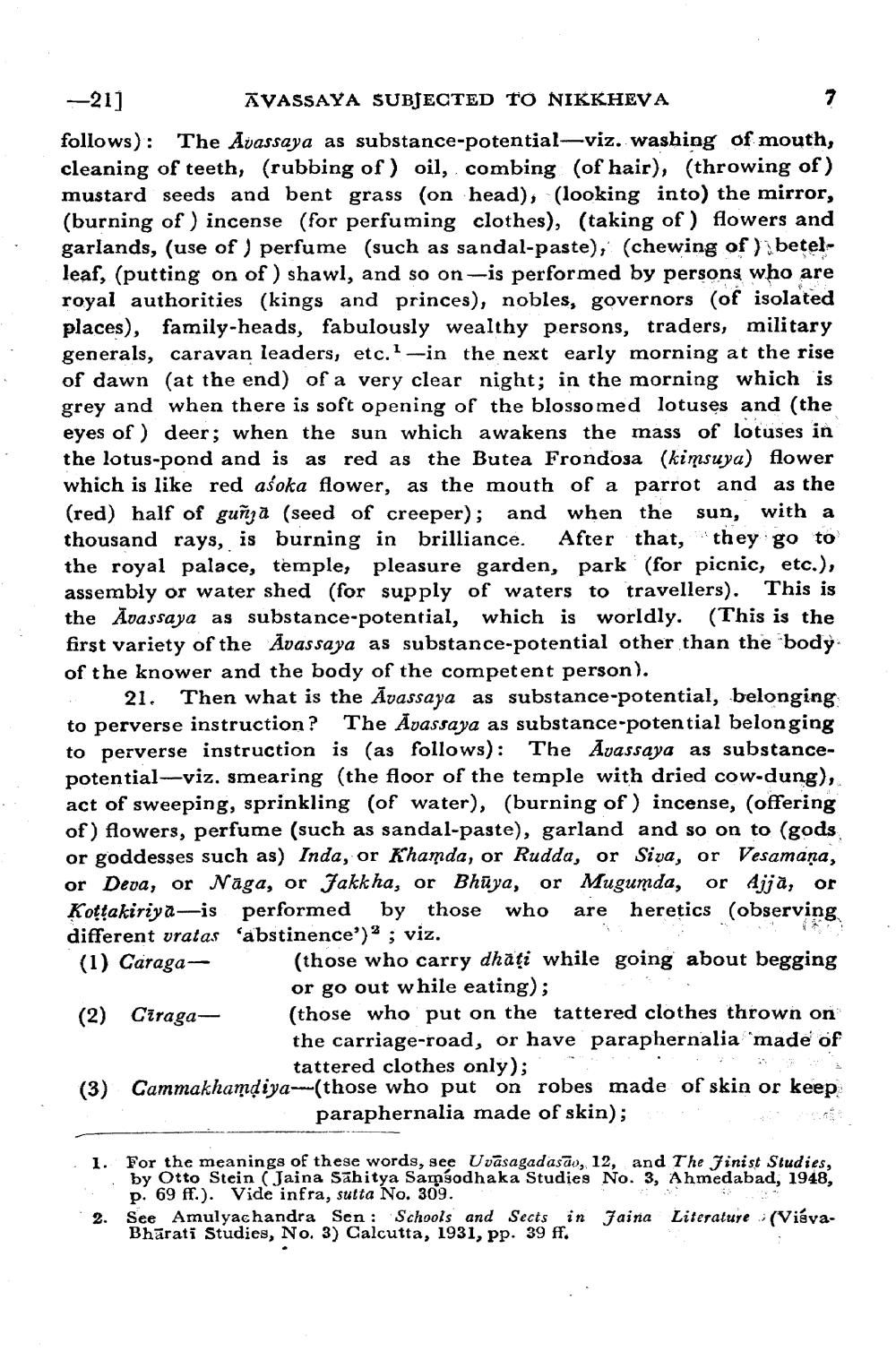________________
--211
AVASSAYA SUBJECTED TO NIKKHEVA follows): The Avassaya as substance-potential-viz. washing of mouth, cleaning of teeth, (rubbing of) oil, combing (of hair), (throwing of) mustard seeds and bent grass (on head), (looking into) the mirror, (burning of incense (for perfuming clothes), (taking of) flowers and garlands, (use of) perfume (such as sandal-paste), (chewing of )ibetelleaf, (putting on of) shawl, and so on-is performed by persons who are royal authorities (kings and princes), nobles, governors (of isolated places), family-heads, fabulously wealthy persons, traders, military generals, caravan leaders, etc. -in the next early morning at the rise of dawn (at the end) of a very clear night; in the morning which is grey and when there is soft opening of the blossomed lotuses and (the eyes of ) deer; when the sun which a wakens the mass of lotuses in the lotus-pond and is as red as the Butea Frondosa (kimsuya) flower which is like red aśoka flower, as the mouth of a parrot and as the (red) half of guñjā (seed of creeper); and when the sun, with a thousand rays, is burning in brilliance. After that, they go to the royal palace, temple, pleasure garden, park (for picnic, etc.), assembly or water shed (for supply of waters to travellers). This is the Avassaya as substance-potential, which is worldly. (This is the first variety of the Avas saya as substance-potential other than the body. of the knower and the body of the competent person).
21. Then what is the Avassaya as substance-potential, belonging to perverse instruction? The Avassaya as substance-potential belonging to perverse instruction is as follows): The Avassaya as substancepotential-viz, smearing (the floor of the temple with dried cow-dung), act of sweeping, sprinkling (of water), (burning of) incense, (offering of) flowers, perfume (such as sandal-paste), garland and so on to (gods or goddesses such as) Inda, or Khamda, or Rudda, or Siva, or Vesamana, or Deva, or Naga, or Jakkha, or Bhūya, or Mugumda, or Ajjā, or Kotļakiriya-is performed by those who are heretics (observing, different vratas 'abstinence') %; viz. (1) Caraga
(those who carry dhati while going about begging
or go out while eating); (2) Ciraga– (those who put on the tattered clothes thrown on
the carriage-road, or have paraphernalia 'made of
tattered clothes only); (3) Cammakhamdiya--(those who put on robes made of skin or keep
paraphernalia made of skin);
1. For the meanings of these words, see Uvasagadasão, 12, and The Jinist Studies,
by Otto Stein (Jaina Sāhitya Samsodhaka Studies No. 3, Ahmedabad, 1948,
p. 69 ff.). Vide infra, sutta No. 309. 2. See Amulyachandra Sen : Schools and Sects in Jaina Literature (Visva
Bhārati Studies, No. 3) Calcutta, 1931, pp. 39 ff.




